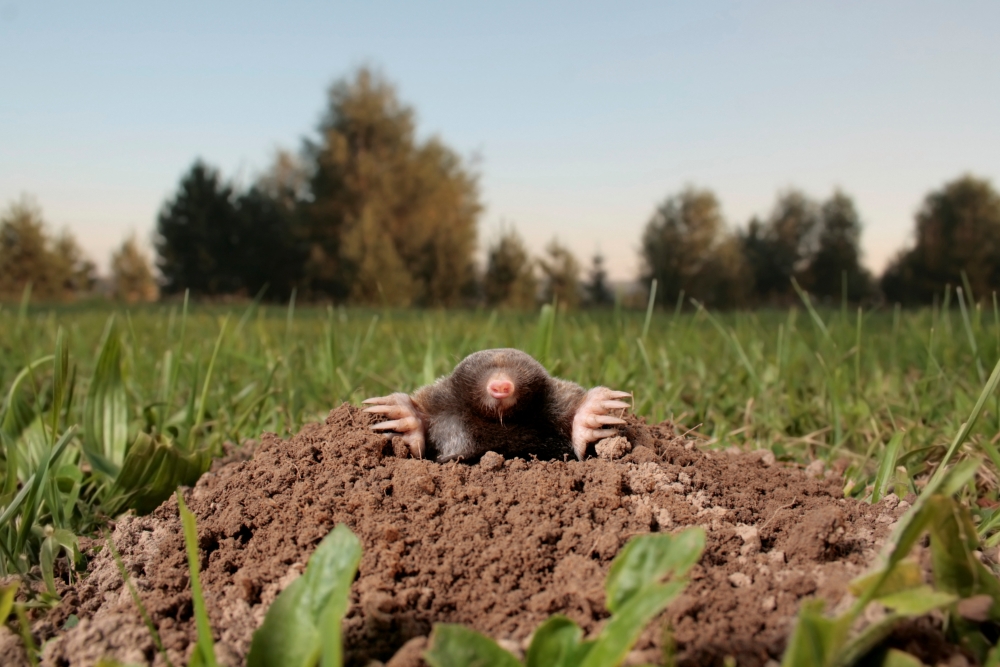Mole

Status
Native, common and widespread
Population
41,400,000
Scientific name
Talpa europaea
Molehills are a familiar sight in the UK but few people have ever seen the animal responsible. Moles spend almost all of their life underground and are well adapted to a digging-lifestyle. They have strong, shovel-like forelimbs and short, velvety fur that can lie in either direction, allowing them to move easily forwards and backwards through tunnels. In shallow soil, the burrows are largely on one level, but elsewhere the elaborate tunnel system may be multi-tiered, running from just below the surface to about a metre down and covering several thousand square metres. The tunnel system acts as a pit-fall trap, collecting earthworms and insect larvae, which are caught by the patrolling resident before they can escape. When prey is plentiful, moles may be inconspicuous because the existing tunnels provide enough food, but it is clear that there is a seasonal effect, with more molehills appearing in spring and autumn than at other times.
Head-body length: 12 – 17cm
Tail length: 2 – 4cm
Weight: 70 – 130g
Lifespan: 2 – 3 years; very few survive to five years
Reproduction
Moles breed from late February to June. Litters of 3 – 4 pups are born in April or May and are weaned at 4 – 5 weeks of age. They disperse shortly afterwards and are able to breed the following spring.
Diet
A mole has a diet mainly of soil invertebrates such as earthworms, insect larvae, myriapods and slugs. They will also feed on carrion.
Habitat
Deciduous woodland, permanent pasture and arable fields, as well as gardens.
Predators
Tawny owls and stoats.
Threats
Moles are considered a pest on agricultural land and are controlled by trapping. Poisoning with strychnine was banned in the UK in 2007.
Status & conservation
Native, common and widespread. They are not listed by the IUCN.
GB population size & distribution
GB mole population 41,400,000. The population trend is unclear. There is an indication that numbers have declined since 2000. Moles are widespread on mainland Britain and the islands of Skye, Mull, Anglesey, Wight, Alderney and Jersey. They are absent from Ireland.
Did you know?
The amount of oxygen in the tunnel system can be only a third of that at the surface and to deal with this, moles have more blood and twice as much haemoglobin, the oxygen-carrying pigment in blood, than other mammals of their size.
